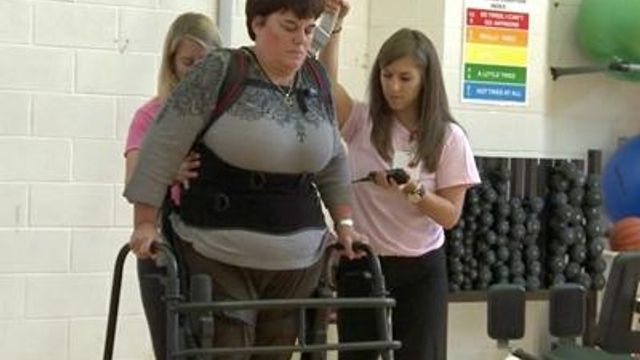Robotic device helping paralyzed patients walk again
Ekso Skeleton, a device being tested around the country, including Raleigh, is giving paralyzed patients a chance to walk.
Posted — UpdatedDebbie Myers, who was paralyzed 11 years ago when she fell off the roof of her Lake Kerr home, is one of a number of patients at WakeMed's rehabilitation hospital in Raleigh using what's called the Ekso Skeleton to regain her independence from a wheelchair.
"I think about going for a walk and going shopping and being able to walk," she said. "I'm excited about the whole concept."
The $130,000, 45-pound robotic exoskeleton is essentially a frame that patients get inside. It does most of the work for them. They only have to balance their upper body and shift their weight when they move.
Ekso joints are aligned with the patients' hips and knees, and the rest is tightly fitted around their bodies.
"We have sensors in the foot and throughout the device that are constantly telling the onboard computer where the device is, where their center of gravity is and where they are in their gait cycle," said Mike Magill, sales and marketing consultant with Ekso Bionics, which makes the robot and is testing it throughout the United States before putting it on the market for commercial use in 2014.
WakeMed is one of 16 centers nationally that offer use of the device in a rehabilitation setting.
Myers was using special leg braces and a walker to get around, but it left her exhausted.
After four sessions with Ekso, she says she is feeling the health benefits of being upright, including improved circulation, breathing and bone strength.
More than that, she says, she's closer to claiming her independence.
• Credits
Copyright 2024 by Capitol Broadcasting Company. All rights reserved. This material may not be published, broadcast, rewritten or redistributed.





